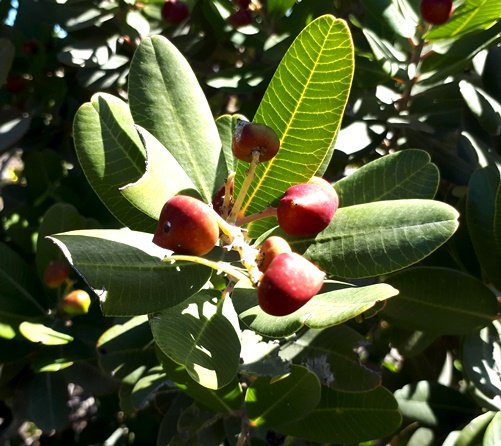Heeria argentea red fruit

Author: Ivan Lätti
Photographer: Jack Lätti
These red Heeria argentea fruit are not seen too often, as red is but one of the fruit colours the tree produces; fruits may also be green, cream or yellowish. (Van Wyk and Van Wyk (1997) also published a photo of red H. argentea fruit.)
Whatever the colour, these fruits appeal to certain rodents that eat the thin, fleshy outer parts or pericarps, while no damage is done to the seed from which a new tree can still grow. The particular rodent discovered to be serving H. argentea in this way is Micaelamys namaquensis, the Namaqua rock rat. Hyrax (dassies) may also perform this function.
Rodent hunger fulfils the fruit dispersal requirements in a mutually beneficial, symbiotic relationship between tree and animal. The tree’s survival hinges on mobility in space and time, afforded by its animal partner; and rats must eat.
This is but one of such arrangements by which seeds of fynbos (and other) plant species are dispersed by mammals. Scientists use camera traps to record proceedings, learning about what goes on in nature when few are looking, often at night (White and Midgley, 2017: Dispersal of semi-fleshy fruits to rock crevices by a rock-restricted rodent, University of Cape Town, Researchgate).

